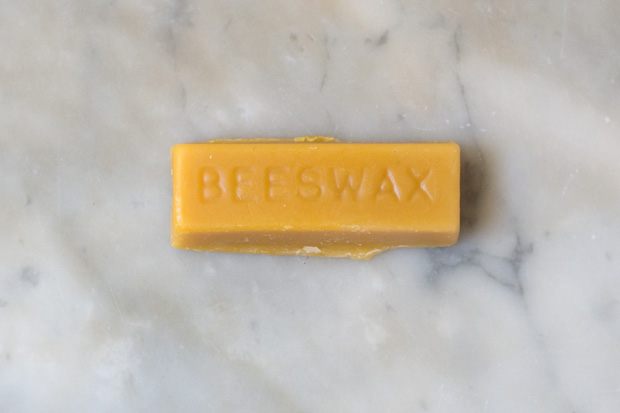
I have a good number of wood cutting boards, wood-handled knives, and wooden spoons in my kitchen, as I’m sure most of you do. One of the things that bothers me most about caring for them is nearly all the products related to this task are mineral oil based. For example, spoon butter. It’s typically a blend of beeswax and mineral oil. You rub it into cutting boards and spoons to moisturize them, prevent cracking, and repel water. The wood soaks it up beautifully. I’ve been thinking, for years, that there must be an alternative to the mineral oil based spoon butter. It’s a by-product of petroleum production, and not something I want to ingest.
Thinking Through an Alternative
So, the way spoon butter works is quite simple. You rub it all over your wood-based spoons, handles, tools, and food preparation surfaces as a moisturizer and conditioner of sorts. Figuring out an alternative solution is a bit tricky. You need something to cut the beeswax, which is solid, snappy, and dense. Mineral oil brings a fluidity to the blend, and it allows you to slather. Swapping in another oil is the logical thing to do, but it’s not that simple because a lot of those oils go rancid quickly. Lately, I’ve been making a spoon butter with a blend of organic beeswax and extra-virgin coconut oil, and I like it! The coconut oil is quite stable, and won’t go bad quickly, and the wood laps it up. A coconut scent lingers, just a hint – actually quite nice.
Buying Beeswax
You can typically buy beeswax in bars, or little pearls. The pearls are great because they melt quickly. The bars (above) are rough to cut. I typically cut partially through, and then snap a break on the cut line. That seems to be easiest.
Before & After Spoon Butter
Here’s the before and after – parched spoons on top. And then below, just a few minutes later, after applying the spoon butter. Because, like beeswax, coconut oil is solid at room temperature, getting the ratio of oil to beeswax right is important. If you have too much beeswax, it’s impossible to get the spoon butter out of the jar. Coconut oil melts at 76F degrees, so with a high ratio of it, you scoop a chunk onto the surface your working on, and it quickly becomes spreadable.
Alternative Ideas: Let me know if you have other ideas on this topic – I’m all ears. A friend, who makes beautiful all-natural body products recommended I try broccoli seed oil. And as I was poking around, I noticed watermelon seed oil as well. Also, a number of people in the comments have enthusiastic suggestions, including a number for walnut oil. In the meantime, I’m pretty happy with this version & hope some of you give it a try! xo -h
Continue reading Spoon Butter on 101 Cookbooks
No comments:
Post a Comment